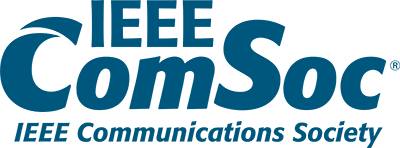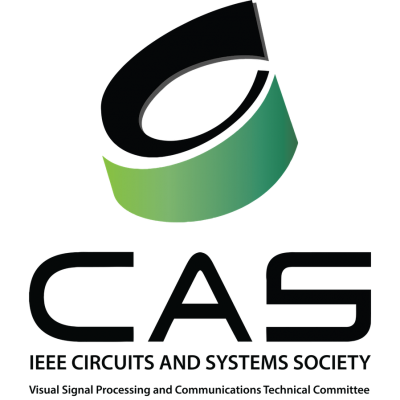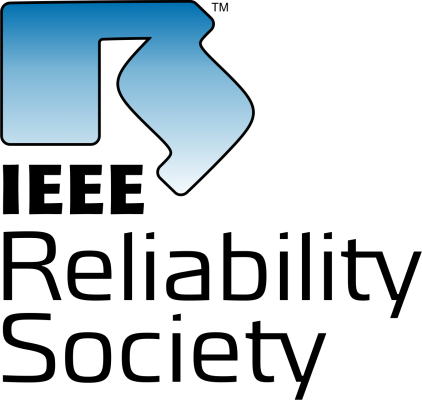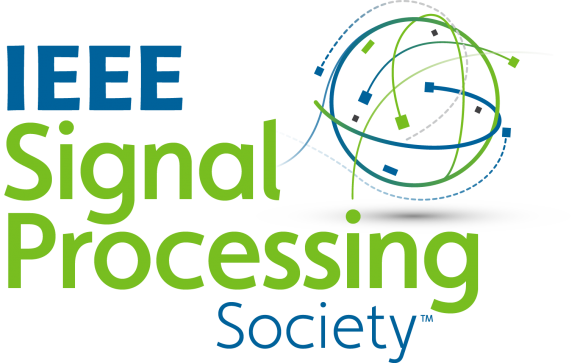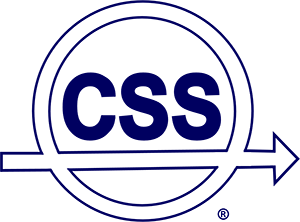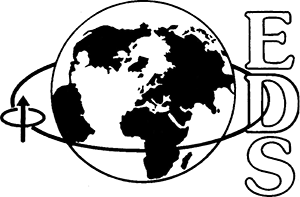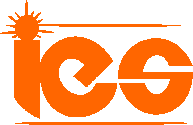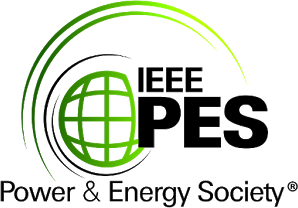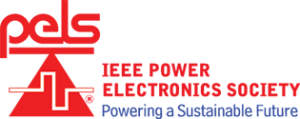The majority of the speakers for the Summit are chosen by invitation. However, the Summit will also accommodate a limited number of additional speakers whose presentations address the subjects we have listed above and whose proposals for presentations align with the theme of the Summit. If you wish to submit a proposal for inclusion in the Summit, please reach out to one of the chairs below. We require all speakers and attendees to register for the Summit. Submissions for talk ideas and speaker nominations should be directed to:
Charlie Jackson, Charles.M.Jackson@ngc.com
Jasmin Grosinger, jasmin.grosinger@tugraz.at
Mark Gouker, gouker@ll.mit.edu
Adam Drobot, adam.drobot@gmail.com
Prof. Joseph Bardin, University of Massachusetts Amherst, Massachusetts, United States, and Research Scientist with Google Quantum AI
Talk Title #1: A brief introduction to quantum computing for microwave engineers.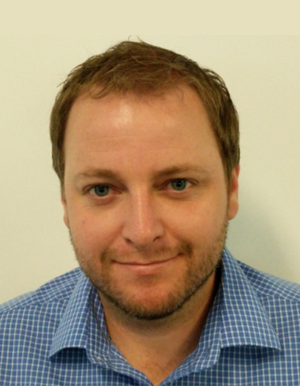
Abstract: Today's state-of-the-art quantum computers are often controlled and measured using microwave technologies. Moreover, the quantum processor itself often relies on microwave components and/or techniques. The aim of this talk is to provide a brief introduction to the field of quantum computing for newcomers to the field. The talk will begin with a comparison of classical (digital) computing to quantum computing, illustrating the similarities and differences as well as what the requirements for universal quantum computing are. After the fundamentals have been discussed, an example quantum processor technology using superconductor technology will be described. Control and readout techniques will be summarized.
Talk Title #2: Microwave-related challenges associated with the implementation of large-scale superconducting quantum computers
Abstract: Today's state-of-the-art superconductor-based quantum computers rely heavily on commercial-off-the-shelf microwave technologies. However, these systems are really just experimental proof-of-concept systems and will have to be scaled by several orders of magnitude in order to permit practical fault-tolerant quantum computing. This talk will begin with a summary of the control and measurement electronics employed in a 54 qubit quantum computer that was used to demonstrate post-classical computation. Then microwave research challenges related to quantum control, quantum measurement, packaging, and interconnects for a large-scale, O(1e6) qubit, quantum computer will be discussed. Example research efforts will be described as appropriate.
Biography: Joseph Bardin is a Professor at the University of Massachusetts Amherst and a Research Scientist with Google Quantum AI. At UMass Amherst, his team explores cryogenic low noise CMOS and BiCMOS integrated circuits for applications such as radio astronomy and quantum computing. At Google, he leads the development of electronics for quantum computing. He is the recipient of several awards including the 2022 Microwave Magazine Best Paper Award, received for the 2020 tutorial paper "Quantum Computing: An Introduction for Microwave Engineers."
Astrid Bötticher, PhD., Political Scientist and Researcher, University of Jena, Jena, Germany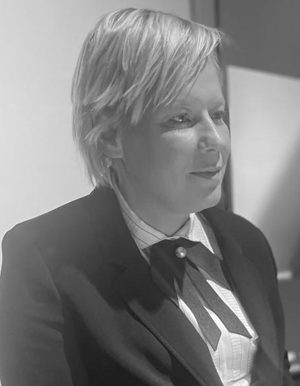
Talk Title: Quantum Humanities - A Research Field
Abstract: Quantum computing is a new form of computing that is based on the principles of quantum mechanics. It has the potential to revolutionize many fields, including the humanities and social sciences. The idea behind quantum humanities is to explore the potential of quantum computing to answer new questions in these fields, as well as to consider the potential societal impacts of this technology. This paper proposes a research program for quantum humanities, which includes the application of quantum algorithms to humanities and social science research, the reflection on the methods and techniques of quantum computing, and the evaluation of its potential societal implications. This defines the field of quantum humanities and to establish it.
Biography: Astrid Bötticher PhD is a political scientist and researcher writing her Habilitation at the University of Jena (GER). Here, she conducts research on technopolitical processes in the context of the development of disruptive technologies and radical innovations and their implications for power politics. She is founder of the Quantum Humanities Network, based at University of Innsbruck (AUT) and has developed a research program for quantum humanities. She is particularly interested in the significance of second-generation quantum technology and its impact on society, the ethical implications of research and design thinking as ethical approach.
Kirk Bresniker, Hewlett Packard Labs Chief Architect, HPE Fellow/VP, Palo Alto, California, United States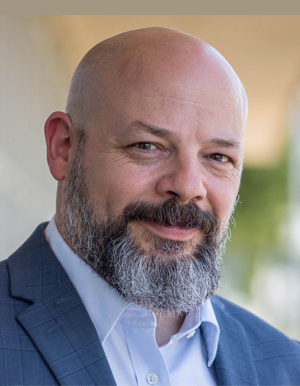
Talk Title: Extraordinary claims demand extraordinary engineering – the When and Where of Quantum Computing
Abstract: The motivation is clear: so many challenges we face as a species demand either an unprecedented ability to simulate and engineer at the scale where quantum mechanics dominate or they demand reasoning over constraints at the planetary scale. Since Feynman pointed the way four decades ago, quantum computing has been a tantalizing possibility, a way to achieve breakthroughs we know conventional systems and algorithms will never be capable of. Over the last five years there has been a dramatic increase globally in teams and funding dedicated to the hunt for ideal qubit and we’re seeing some amazing experiments. But from Lab to Fab to Volume isn’t just “a matter of engineering” and “TAMO” – “Then a Miracle Occurs” isn’t and option. We’re facing a series of physical, cyber-physical and software systems engineering challenges that we need to be working now.
Biography: Kirk Bresniker is Chief Architect of Hewlett Packard Labs and an HPE Fellow/VP. He joined Labs in 2014 to drive The Machine Research program, leading disruptive development teams across Labs, HPE business units and with academic and industrial partners. Prior to joining Labs, Kirk was Chief Technologist and Fellow/VP in the HP Servers GBU, the culmination of 25 years product delivery engineering. Kirk current holds 31 US patents and graduated in 1989 Cum Laude from Santa Clara University Humanities Honors program with a BSEE. IEEE Senior member, chair IEEE IRDS Systems and Architectures chapter, IEEE Industrial Advisory Board founding member, Markkula Center for Applied Ethics Technical Ethics Advisory Board founding member, Past member of the World Economic Forum Global Future Councils on The Future of Compute and Quantum Computing and is currently a member of the Global Future Council on Agile Governance.
Dr. Alirio S. Boaventura, Senior Scientist, Maybell Quantum Industries, Denver, Colorado, United States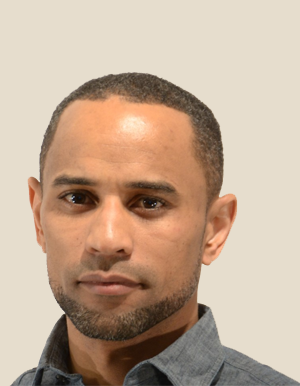
Talk Title: Microwave Engineering Aspects of Superconducting Quantum Computers
Abstract: Quantum platforms are being scaled up with the goal of outperforming the most powerful classical alternatives. Quantum computing in particular is making rapid progress towards outperforming supercomputers to solve certain complex problems related to materials, medicine, energy, and climate. Some of today’s most prominent platforms for implementing large-scale quantum computers use conventional microwave systems. In superconducting quantum computing, the quantum bit (qubit) operates in the microwave regime and is controlled and readout via microwave electronics. The control/readout microwave hardware is typically at room temperature and communicates with the quantum processor at millikelvin temperatures in a dilution fridge via cryogenic microwave interconnects. Scaling these systems to the many qubits required for practical quantum computation poses significant engineering challenges. In this talk, I will overview the microwave interface of present-day superconducting quantum computing systems, I will address the application of microwave measurement and characterization techniques for improved circuit and system design, and I will touch on some of the scaling challenges and discuss some solutions being implemented.
Biography: Alirio S. Boaventura earned his Ph.D. degree from the University of Aveiro, Portugal. He works as a senior research scientist for Maybell Quantum Industries developing scalable cryogenic RF hardware solutions for quantum application. Before joining Maybell, he was a postdoc researcher at the University of Colorado and the National Institute of Standards and Technology (NIST) in Boulder where he worked on characterization of superconducting microwave devices and led the development of high-frequency measurement capabilities for the design of a new quantum-based RF voltage standard. His research interests also include EDA tools for quantum microwave applications. Dr. Boaventura has authored or co-authored over fifty peer-reviewed papers and has served as a reviewer for IEEE conferences and journals. He was nominated twice for the IEEE International Microwave Symposium best student paper, was the recipient of an IEEE Microwave Engineering Graduate Fellowship Award, the co-recipient of an ANACOM/URSI-Portugal Prize and was featured during the National Postdoctoral Appreciation Week.
Dr. Advait Deshpande, The Open University, Milton Keynes, United Kingdom
Talk Title: Quantum computing state-of-play and the future of the Internet of Things
Abstract: The aim of this talk is to examine the current state of software and hardware developments in quantum computing and understand their implications for the future of the Internet of Things (IoT). This talk will consider the current level of readiness of quantum computing technologies, opportunities quantum computing technologies could create for IoT, and possible unknowns posed by quantum computing technologies to the emerging IoT ecosystem. The talk will explore possible trajectories of development and implications for key market players in both these technologies.
Biography: Dr Advait Deshpande is currently a lecturer in the Open University's School of Computing & Communications. His research interests include business agility transformation, information and communication technologies and innovation, and changes to businesses and markets.
Dr. P. Ben Dixon, Technical Staff, MIT Lincoln Laboratory, Lexington, Massachusetts, United States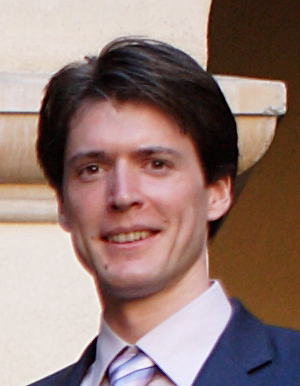
Talk Title: Quantum Memory Module Development and Scalable Quantum Networking
Abstract: Quantum networking enables a range of quantum enhanced applications such as enhanced sensitivity distributed sensing and improved quantum processor scaling architectures. However, the low rates and lack of edge interfaces of current quantum communication links prevents these applications from be developed. In this talk, I will discuss the recent efforts at MIT Lincoln Laboratory to both develop modular quantum memory systems for improved quantum networking rates as well as to develop interface capabilities to incorporate these memories into existing telecom network infrastructure, thereby enabling advanced quantum network functionality.
Biography: Dr. P. Ben Dixon is a member of the Technical Staff at MIT Lincoln Laboratory. Since joining the lab in 2014 he has worked in quantum communication and networking, particularly in developing advanced technology components and integrating into quantum network testbeds. Prior to joining the laboratory, Dr. Dixon earned a Ph.D. in physics from the University of Rochester, where his doctoral research focused on the generation of high-dimensional entangled photon states and their use in metrological and sensing applications.
Adam Drobot, OpenTechWorks Inc., Wayne, Pennsylvania, United States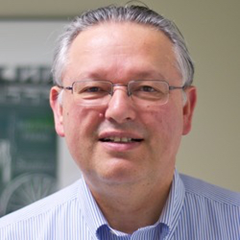
Talk Title: Quantum Information Technology and the Internet of Things
Abstract: Quantum Information Technology (QIT) is in its infancy. Much of current investments and efforts are aimed at resolving fundamental issues. There are four areas that stand out for QIT: computing, communications, sensing, and the creation of algorithm/software models that take advantage of QIT. At the same time there is considerable activity in exploring potential applications to understand where QIT may offer unique and significant advantages, subject to realistic operational constraints. In contrast the Internet of Things (IoT) has seen significant deployment and while the emphasis is on near term functionality, there are important aspects of IoT such as extreme compute power, secure communications, dependable device identity, accuracy in sensing, and algorithms to control and optimize complex systems where current methods and approaches have limitations. Consequently, an important issue for organizations that are investing in IoT is tracking progress in QIT and understanding when QIT will mature and be appropriate for introduction in IoT solutions and applications. The presentation consists of two parts. The first is an overview of IoT and identification of areas where different QITs may play a role. The second is a dialog, using ChatGPT, to understand the current state of QIT, the challenges posed in bringing QIT to maturity, and a rough guess at the timescales on which specific QIT implementations may reach maturity.
Biography: Adam is the Chairman of the Board of OpenTechWorks, Inc. He serves on the Boards of multiple early-stage companies. His activities are strategic consulting, start-ups, non-profits, and industry associations. In the past he was the President of Applied Research at Telcordia Technologies (Bellcore) and the company’s CTO, and before that the Senior Vice President for Science and Technology at SAIC/LEIDOS.
Adam is a current member of the FCC Technological Advisory Council where he Co-Chairs the Working Group on Artificial Intelligence; the University of Texas Physics Department Advisory Council; and Chairman of FAMES USA a non-profit that organizes programs to attract disadvantaged youths to careers in STEM fields. In the past, he was on the Boards of the Telecommunications Industry Association (TIA) where he Chaired the Technology Committee; the Association for Telecommunications Industry Solutions (ATIS); the New Jersey Technology Council; the US DoT ITS Program Advisory Committee, and the University of Michigan Transportation Research Institute External Advisory Board.
Over the years he has been active in IEEE and served as the Chair of, multiple Committees including the IEEE IoT Activities Board, and multiple major conferences such as the IEEE World Forum on IoT. He is currently a member of the IEEE Press Editorial Board. He has published over 150 journal articles and holds 27 patents. He is a fellow of the American Physical Society. His degrees include a BA in Engineering Physics from Cornell University and a PhD. in Plasma Physics from the University of Texas.
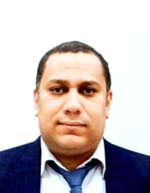 Dr. Ahmed Farouk, Assistant Professor, South Valley University, Quena, Egypt
Dr. Ahmed Farouk, Assistant Professor, South Valley University, Quena, Egypt
Talk Title: Quantum Computing: A Tool for IoT-Blockchain Network
Abstract: Securing IoT-blockchain infrastructure and communication from quantum attacks is vital. Of course, first, we have to think about the quantum threats and identify the utmost risk-sensitive data and devices and what are the required steps to minimize these threats and how the quantum components can be used as enables for IoT-blockchain. However, while selecting the tools to achieve the goals, we should keep current and future challenges in mind. We should already start exploring the possible threats and requirements for the transition stages from the classical IoT-blockchain to a fully quantum (that doesn't mean replacing the classical networks with quantum networks, quantum and classical networks will operate side by side) to ensure the security against both current classical and future quantum attacks. This solution will become the first step in creating a detailed framework for securing the IoT-blockchain by employing the current quantum algorithms and components.
Biography: Ahmed Farouk is currently an assistant professor at South Valley University; before that, he was a Postdoctoral Research Fellow at Wilfrid Laurier University and Ryerson University, Canada. He received his M.Sc. and Ph.D. degrees from Mansoura University, Egypt. He is one of the Top 20 technical co-founders of the Quantum Machine Learning Program by Creative Destruction Lab at the University of Toronto. Furthermore, he selected as one of the Top 25 of InnovateTO150 Canada to showcase the best of Toronto's next generation of change-makers, innovators, and entrepreneurs. He is exceptionally well known for his seminal contributions to Quantum Information, Machine Learning, and Cryptography theories. He published over 80 papers in reputed and high-impact journals like IEEE IOTJ, IEEE TITS, IEEE WCM, and IEEE TII. The exceptional quality of his research is recognized with national and international awards such as IAAM Scientist Medal and Obada Prize. He was selected as one of 17 researchers from Africa to attend the 70th Lindau Meeting of Nobel Laureates. His volunteering work is apparent since he was appointed as chair of the IEEE computer chapter for the Waterloo-Kitchener area and editorial board for many reputed journals like IEEE Consumer Electronics Magazine, Nature Scientific Reports, IET Quantum Communication, and IEEE Access. Recently, he was appointed as an Officer- (Secretary) for the new IEEE Consumer Technology Society (CTSoc)'s Technical Committee on "Quantum in Consumer Technology" (QCT). Furthermore, he was awarded various travel and funding grants such as by IEEE, ASRT, and Okinawa Institute of Science and Technology.
Dr. Joel Q. Grim, Research Physicist, US Naval Research Laboratory, Washington, D.C., United States
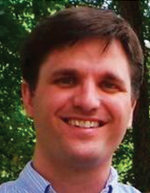
Talk Title: Scalable integrated quantum dot networks and nanophotonic neuromorphic ‘brain-inspired’ computing
Abstract: I will show progress from our quantum optics team toward creating scalable integrated semiconductor quantum dot (QD) networks. This work is motivated by the prospects of photonic quantum computing, simulation, communication, and sensing. We use InAs QDs embedded in GaAs photonic crystal membranes that can host electron/hole spin qubits and interfaced with ‘flying qubit’ single photons. Although QDs have become very advanced with numerous demonstrations of high photon indistinguishability, quantum transistors, and spin-spin entanglement, these efforts have been limited to one, and at most, two QDs (a limitation shared by all solid-state single photon sources). Our team has recently made a breakthrough with a technique that enables scalable tuning of QDs into resonance. We have leveraged this technique to perform a demonstration of an entangled, superradiant state from multiple QDs coupled to the same photonic crystal waveguide1. We have also used this technique to realize collective scattering of laser light from two QDs, and have observed an enhanced optical nonlinearity at the few photon level2. I will also present our work in the area of neuromorphics ((‘brain inspired’ computing)), where we aim to use the nonlinear dynamics of networks of nanolasers for low size, weight, and power machine learning.
1. Grim, J. Q. et al. Scalable in operando strain tuning in nanophotonic waveguides enabling three-quantum-dot superradiance. Nature Mater. 18, 963–969 (2019).
2. Grim, J. Q. et al. Scattering laser light from two resonant quantum dots in a photonic crystal waveguide. Phys. Rev. B 106, L081403 (2022).
Biography: Dr. Grim is a physicist in the Quantum Science & Technology section within the Electronics Science & Technology Division at the U.S. Naval Research Laboratory. He leads programs on solid-state quantum optics, nanophotonic neuromorphic computing, and physical random number generation. He won the Edison Chapter Sigma Xi Young Investigator award in 2020. Prior to joining NRL in 2016, he was a visiting scientist at CERN where he developed material systems for ultrafast detection of high-energy radiation. He did postdoctoral work at the Italian Institute of Technology studying shape-controlled nanocrystals for optoelectronic applications, and received a PhD in physics from Wake Forest University where he investigated scintillators for high-energy detection for security applications. He has undergraduate degrees in mathematics and biological engineering from Penn State University.
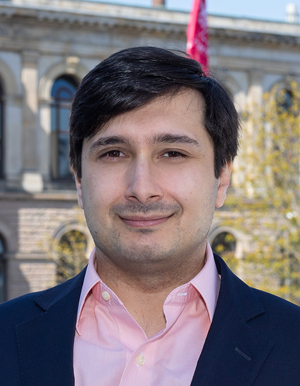 Prof. Vadim Issakov, Head of Institute for CMOS design, Braunschweig University of Technology, Braunschweig, Germany
Prof. Vadim Issakov, Head of Institute for CMOS design, Braunschweig University of Technology, Braunschweig, Germany
Talk Title: Circuit and System-Level Considerations towards Scalable Trapped Ion Quantum Computer
Abstract: This talk discusses in a systematic way the challenges and system-level aspects related to integrated circuits for miniaturization of a trapped ion quantum computer.
First, system level aspects and physics review of a trapped ion quantum computer operation is given. Particularly, near-field microwave quantum logic is described in detail (on example of Be+, Ca+ and Yb+ ions). Various parts of the system are presented including microwave power amplifiers with envelope shaping along with integrated direct digital synthesizers (DDS) to drive Mølmer–Sørensen gates or high-speed DACs controlling the shuttling motion of the ions to the registers on the chip.
The current state of the art electronic realization is shown using off-the-shelf equipment. Next, the potential of miniaturization and scalability of the trapped ion quantum computer by means of integration is visualized. The required system-on-chip is described in detail and specified to building blocks. The challenges related to achieving the electrical specifications (such as suppression of unwanted harmonics or port isolation) are discussed. Modelling results at cryogenic temperature of SiGe HBT and MOS transistors of 0.13 µm SiGe HBT BiCMOS technology are presented. The results of modelling are applied to design of the microwave sources for controlling the qubit states and the impact of modelling is shown. Finally, a system-on-chip for driving the trapped ions is discussed.
Biography: Vadim Issakov received the M.Sc. from TU Munich in 2006, and the Ph.D. degree from the University of Paderborn, in 2010. In 2010, he joined Infineon Technologies. Afterwards, he was with imec, Belgium, and then with Intel Corporation, before he came back to Infineon in 2015 as Principal mm-wave Design Engineer working on predevelopment of millimeter-wave radar products. Since April 2021 he is a full Professor at the TU Braunschweig. He has authored or co-authored over 125 peer-reviewed papers, one book, and holds 11 patents. Dr. Issakov was a recipient of the 2010 University of Paderborn best Dissertation Award, 2011 VDI/VDE distinguished dissertation award, and a 2019 IEEE MTT Outstanding Young Engineer Award. He serves as Associate Editor of the T-MTT and MWCL and also on the technical program committees of RFIC and BCICTS. He is also the distinguished lecturer of the IEEE Microwave Theory and Technique Society in 2023-2025.
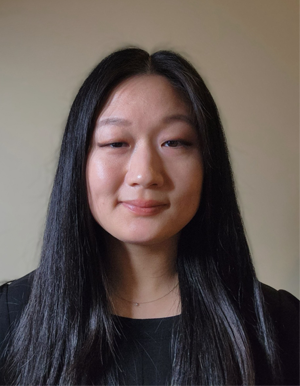 Dr. Catherine Lee, Technical Staff, Lincoln Laboratory, Massachusetts Institute of Technology, Lexington, Massachusetts, United States
Dr. Catherine Lee, Technical Staff, Lincoln Laboratory, Massachusetts Institute of Technology, Lexington, Massachusetts, United States
Title: Free Space Quantum Networking and Synchronization
Abstract: Quantum networks can enable quantum applications in multiple areas, such as distributed quantum processing, timing, and sensing, that outperform their classical analogues. These quantum applications require the distribution of quantum entanglement as a network resource between remote nodes. MIT Lincoln Laboratory is developing network architectures and all required technology components for scalable quantum networks. In this talk, I will describe recent efforts in MIT Lincoln Laboratory's free-space quantum network testbed for high-rate entanglement distribution to inform future space-ground quantum network demonstrations.
Biography: Dr. Catherine Lee is a member of the Technical Staff in the Optical and Quantum Communications Technology Group at MIT Lincoln Laboratory, where she currently leads the entanglement source development and operation for the group's quantum network testbeds and architecture studies. She earned a PhD in Electrical Engineering and Computer Science from the Massachusetts Institute of Technology in 2018. Her research was focused on high-dimensional quantum communication and included the establishment of MIT Lincoln Laboratory's fiber quantum network testbed.
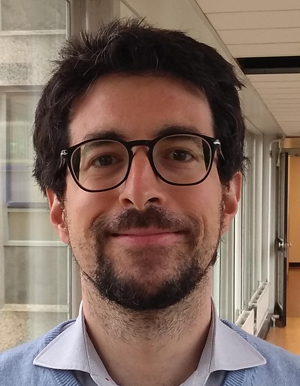 Luca Mazzarella, PhD., System Engineer, Netherlands Organisation for Applied Scientific Research, The Hague, Netherlands
Luca Mazzarella, PhD., System Engineer, Netherlands Organisation for Applied Scientific Research, The Hague, Netherlands
Title: Quantum Inspire – QuTech ’s Multi Hardware Quantum Computing Platform
Abstract: Within QuTech ’s mission to bring quantum technology to industry and society (by combining fundamental and applied research), we have developed Quantum Inspire: a multi-hardware full-stack quantum computer platform for future co-development. This platform offers public cloud-based access to QuTech technologies such as a 2-qubit quantum dot spin processor, a 5-qubit transmon-based quantum processor, a programmable quantum computer simulator (with up to 31 qubits), some tutorials and algorithm examples, as well as user background information on quantum information science (www.quantum-inspire.com).
In this talk, we give an overview of QuTech. We introduce the audience to quantum computing. Further, we discuss some important aspects and developments of the Quantum Inspire platform, show how the platform can be used, and give some examples of quantum computing algorithms.
Biography: Luca Mazzarella obtained a master's degree in theoretical physics (2010) and a Ph.D. in information engineering (2014) from the University of Padova. He then moved to the University of Strathclyde in Glasgow and the NASA Jet Propulsion Laboratory for postdoc appointments. In 2022, he joined the Netherlands Organisation for Applied Scientific Research (TNO) as a quantum system engineer. He works mainly on the Quantum Inspire project focusing on implementing error mitigation strategies.
Anastasia Marchenkova, Research Engineer, Bleximo, Berkeley, CA, United States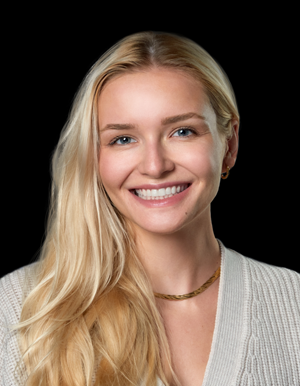
Talk Title: Quantum Advantage with Application Specific Quantum Devices
Abstract: Bleximo is building superconducting application-specific quantum computers by co-designing the algorithms and hardware to deliver practical solutions for high-impact problems. Like the Apollo Guidance Computer, with 2 MHz clock and 2 kB memory, which guided astronauts to successful lunar landings, Bleximo’s strategy pushes the capabilities of noisy intermediate-scale quantum hardware to its limits while developing the foundation for error-corrected quantum computers. We scale the number of qubits, while enhancing individual qubit stability, and make algorithms run faster by designing processor architectures tuned to particular algorithms.
As a new era in computing opens, we see gaps in processor-supporting cryogenic and control hardware and quantum workforce preparedness.
The current state of the hardware does not address critical needs to accelerate research in superconducting quantum computing—a turn-key solution with minimal setup time to quickly iterate on experiments and chip designs while maintaining high coherence, rapid warmups and cooldowns, and a rack form factor that allows direct integration with data centers to enable hybrid classical-quantum systems.
We present a transformational platform for R&D and workforce training in quantum computing and superconducting chip prototyping. By democratizing access to quantum computing technology, we can enable new groups of researchers, educators, and users without deep pockets or experience to build a full-stack system
Biography: Anastasia has been a quantum researcher at the Georgia Tech quantum optics and quantum telecommunications lab, a research member of the University of Maryland Joint Quantum Institute, early team member and quantum engineer at Rigetti Quantum Computing, a senior software engineer working on algorithmic optimization at Pendo before joining Bleximo to work on superconducting qubit quantum processors. Anastasia has a blog and YouTube channel demystifying quantum computing with the goal to get more scientists and engineers into quantum computing research, and is a big scuba diving fanatic.
Dr. Robert McConnell, Technical Staff, MIT Lincoln Laboratory, Lexington, Massachusetts, United States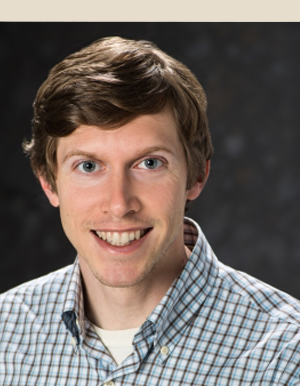
Talk Title: Integrated Technologies for Trapped-Ion Quantum Information Processing and Metrology
Abstract: Trapped atomic ions are a promising modality for large-scale quantum computers and for portable, high-performance optical clocks. The significant experimental overhead required to control these quantum systems at the single-ion level represents an obstacle to scalability and to miniaturization. MIT Lincoln Laboratory is developing integrated technologies to replace optical tables and racks of equipment with electrical and optical control fabricated directly into centimeter-scale chip traps. In this talk, I will first discuss how trapped ions can form the basis of high-fidelity quantum information processors and optical clocks. I will then discuss recent developments—at MIT LL and elsewhere—of integrated control technologies for trapped ions. These include recent demonstrations of the delivery of all necessary wavelengths for ion control via integrated photonics, two-ion entanglement via waveguide-delivered light, ion motional control with an integrated digital-to-analog converter (DAC) circuit, and high-fidelity ion state readout with via integrated single-photon-resolving detectors. I will discuss the prospects and challenges for further combining these technologies to achieve the vision of full ion control integrated into a single chip.
Biography: Dr. Robert McConnell is a member of the Technical Staff at MIT Lincoln Laboratory. Since joining the lab in 2014, he has worked in trapped-ion quantum computing and quantum sensing, particularly in leading the effort at Lincoln Laboratory to miniaturize high-performance trapped-ion optical atomic clocks. His other research interests include the generation of highly-entangled quantum states for metrological gain and the use of quantum systems to perform tests in fundamental physics. Prior to joining the laboratory, Dr. McConnell earned a Ph.D. in physics from Harvard University, where his doctoral research focused on the synthesis and trapping of antihydrogen—the simplest antimatter atom—for studies of fundamental symmetries.
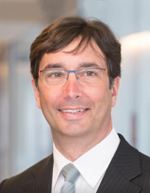 Niko Mohr, Partner at McKinsey, Dusseldorf, Germany
Niko Mohr, Partner at McKinsey, Dusseldorf, Germany
Talk Title: The Quantum Technology Landscape, Quantum Sensing, and the Path to Maturity
Abstract: Quantum sensing has the potential to enhance sensitivity without a corresponding need to increase sensor size. and to explore new grounds in various industries such as healthcare, automotive, and defense. While the question "Who will win the quantum computing race?" is getting the most attention in the public sphere, quantum sensing is poised to deliver on the promise of a quantum-enabled reality much faster.
Niko Mohr, Senior Expert Partner with Digital McKinsey Germany and member of the global IoT and Quantum Technologies leadership team will draw the current picture of the still niche, but quickly evolving, market of quantum technologies, especially quantum sensing: Who is investing and how much? Who are the big players for hardware or applications? What use cases might become reality, and how might the industrial IoT sphere be affected? Beyond sharing his bird's eye view perspective on the market for quantum sensing, he will focus on enablers that must be in place so that quantum sensing can really shine.
Biography: Niko is a Senior Expert Partner with Digital McKinsey, Germany, and part of the global IoT and Quantum Technologies leadership team. He is a leading expert in digital/technology strategy and transformations across industries. He has 25+ years of consulting and interim management (e.g., CDO) experience on senior management level and specializes in corporate strategy, org. development and IT/tech transformation. He is serving clients at all sizes (incl. Start-ups) and across industry and has led several projects in the newly arising digital ecosystems e.g., industry 4.0, connected building, smart city or smart mobility, and Quantum Tech for international corporations and institutions.
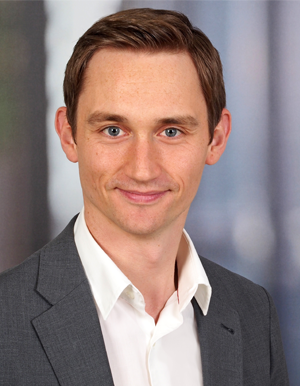 Prof. Roland Nagy, Group of Applied Quantum Technologies at the Friedrich-Alexander-University Erlangen-Nürnberg, Erlangen, Germany
Prof. Roland Nagy, Group of Applied Quantum Technologies at the Friedrich-Alexander-University Erlangen-Nürnberg, Erlangen, Germany
Talk Title: Applications of the Quantum Sensing Technology
Abstract: Over the last decade, the research and development of applied quantum technologies such as quantum simulators, quantum computers, quantum sensors, or quantum networks have become a major endeavor in scientific research. The goal of these research activities is the quantum technology revolution driven by the potential of quantum systems to outperform their classical counterparts. Quantum technologies are known to be more sensitive (quantum sensing), provide higher security (quantum network), or even enable a functionality beyond a classical approach (quantum entanglement). Today, quantum technologies like quantum sensing are reaching a mature technology level which makes them ready for applications. I will give in my presentation an overview of quantum sensing and there applications.
Biography: Roland Nagy received his M.Sc. from the Friedrich-Alexander-University Erlangen-Nuremberg in 2013. He joints after his master’s degree the IBM Thomas J Watson Research Center in Yorktown Heights (USA). The research focus during this time was on surface physics with an emphasis on integrated gas sensors. He joints in 2015 the University of Stuttgart (Group of Prof. Dr. Jörg Wrachtrup) as a PhD student. He focused during his PhD thesis on color center quantum system with applications for quantum technologies. In 2019 he received his PhD title and went to the Carl-Zeiss AG. He was responsible during this time for quantum sensing applications. In 2020 he became a professor for applied quantum Technologies at the Friedrich-Alexander-University Erlangen-Nuremberg.
Dr. Kevin Obenland, Senior Technical Staff, MIT Lincoln Laboratory, Lexington, Massachusetts, United States
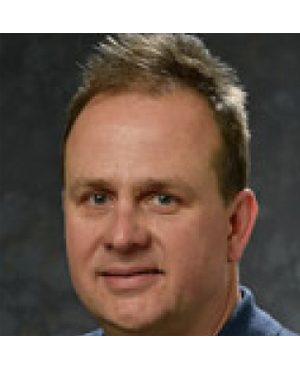
Talk Title: Software for Quantum Hardware and Algorithm Development in the NISQ Era and Beyond
Abstract: As is the case with classical computing, quantum computing requires software to support the development of hardware as well as the construction of applications to be run on available quantum platforms. This software comes in the form of hardware evaluation & control, application development & compilation, platform resource estimation, and hardware design & modeling. In this talk, I will put into context, and describe the various tools that the quantum computing industry is developing to perform these important functions. I will also describe some of the work that our group at MIT Lincoln Laboratory is undertaking in this area. This includes software tools to enable the analysis of architecture tradeoffs in near-term Noisy Intermediate Scale Quantum (NISQ) platforms, as well as work on a new quantum application library (pyLIQTR) that contains implementations of key full-scale quantum algorithms.
Biography: Dr. Kevin M. Obenland is a senior technical staff member in the Quantum Information and Integrated Nanosystems Group where he conducts quantum computing research focusing on the areas of quantum fault-tolerance and error correction, gate-level simulation of noisy physical quantum systems, and resource analysis of quantum algorithms and architectures. Dr. Obenland earned a PhD in Electrical Engineering from the University of Southern California and a BS in Computer Engineering from the University of Texas at Arlington.
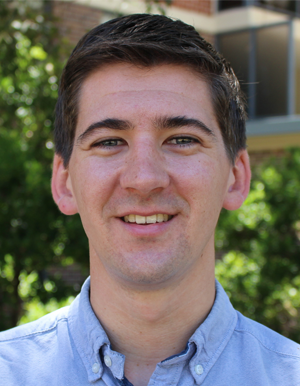 Dr. Robert I. Woodward, Research Scientist at Toshiba Europe Ltd., Cambridge, England, United Kingdom
Dr. Robert I. Woodward, Research Scientist at Toshiba Europe Ltd., Cambridge, England, United Kingdom
Talk Title: Quantum Communications and Quantum Key Distribution (QKD) Technology
Abstract: With the emergence of quantum computers, which have the potential to break classical cryptographic approaches, it has never been more important to develop new technologies for ensuring secure global communications. Using quantum communications, specifically quantum key distribution (QKD) technology, provides such a solution, where security can be proven directly from information-theoretic principles and the laws of quantum physics. In this talk I will give a brief introduction to QKD, explaining the concept and current state of the technology. Various deployments and networks will also be described, highlighting recent activities in QKD commercialization and recent achievements in bringing quantum-safe communications to existing fibre communication networks.
Biography: Dr Robert Woodward is a Research Scientist and Team Leader at Toshiba Europe Ltd, based in Cambridge (UK). His research investigates new fibre-based QKD technologies and their integration into existing network infrastructure, alongside working on the development of Toshiba’s QKD products. Prior to this, he worked in academia in both the UK and Australia, researching nonlinear fibre optics and ultrafast laser physics.
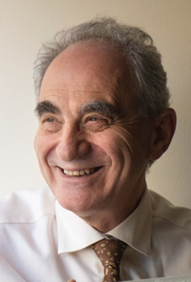 Eli Yablonovitch, Electrical Engineering and Computer Sciences Dept., University of California, Berkeley, California, United States
Eli Yablonovitch, Electrical Engineering and Computer Sciences Dept., University of California, Berkeley, California, United States
Talk Title: “Physics does Optimization (for Free); A New Approach Toward Computation”
Abstract: Optimization is vital to Engineering, Artificial Intelligence, and to many areas of Science. Mathematically, we usually employ steepest-descent, or other digital algorithms. But every inequality in Physics, performs optimization in the normal course of dynamical evolution -- for free. Nature provides us with the following optimization principles:
1. The Principle of Least Action.
2. The Variational Principle of Quantum Mechanics.
3. The Principle of Minimum Entropy Generation.
4. The First Mode to Threshold method.
5. The Principle of Least Time.
6. The Adiabatic Evolution method.
7. Quantum Annealing.
In effect, Physics can provide machines which solve digital optimization problems much faster than any conventional computer. Of these physics principles, “Minimum Entropy Generation” in the form of bistable electrical or optical circuits is particularly adaptable [1] toward offering digital Optimization. For example, we provide the electrical circuit which can address the challenging Ising problem, binary magnet energy minimization.
Since Onsager, [2] (1931, Nobel Prize 1968) introduced the Principle of Minimum Entropy Generation we call this Onsager Computing, as opposed to conventional Von Neumann Computing. In ref. 1 we showed that many of the schemes for Physics-Based-Optimization, reduce to the Onsager Principle. Electrical Onsager Computers run ~10000 times faster, require ~ 10000 times less energy-to-solution, than conventional machines. Furthermore, optical Onsager machines provide an additional 1000 times increase in speed.
References:
[1] Sri K. Vadlamani, T. Patrick Xiao and Eli Yablonovitch, “Physics Successfully Implements Lagrange Multiplier Optimization”, Proceedings of National Academy of Sciences USA 117 26639-26650 (2020). https://doi.org/10.1073/pnas.2015192117 [2] L. Onsager, “Reciprocal Relations in Irreversible Processes. II.”, Physical Review, vol. 38, pp. 2265-2279, (Dec. 1931)
Biography: Prof. Yablonovitch introduced the idea that strained semiconductor lasers could have superior performance due to reduced valence band (hole) effective mass. With almost every human interaction with the internet, optical telecommunication occurs by strained semiconductor lasers. He is regarded as a Father of the Photonic Bandgap concept, and he coined the term “Photonic Crystal” The geometrical structure of the first experimentally realized Photonic bandgap, is sometimes called “Yablonovite”. In his photovoltaic research, Yablonovitch introduced the 4(n squared) (“Yablonovitch Limit”) light-trapping factor that is in worldwide use, for almost all commercial solar panels.
His mantra that “a great solar cell also needs to be a great LED”, is the basis of the world record solar cells: single-junction 29.1% efficiency; dual-junction 31.5%; quadruple-junction 38.8%
efficiency; all at 1 sun. His cellphone antenna company, Ethertronics Inc., shipped over 2x10^9 antennas. He was also a co-founder of Luxtera Inc., the pioneer in Silicon Photonics, now part of Cisco. He co-founded Luminescent Inc., the company that originated “Inverse Lithography
Technology”.
Prof. Yablonovitch is elected as a Member of the National Academy of Engineering, the National Academy of Sciences, the National Academy of Inventors, the American Academy of Arts & Sciences, and is a Foreign Member of the Royal Society of London. He has been awarded the OSA Ives-Quinn Medal, the Benjamin Franklin Medal, the IEEE Edison Medal, the Isaac Newton Medal of the UK Institute of Physics, the Buckley Prize of the American Physical Society, the IEEE W.R. Cherry solar cell award, the Rank Prize (UK), the Harvey Prize (Israel), the IEEE Photonics Award, the IET Mountbatten Medal (UK), the Julius Springer Prize (Germany), the R.W. Wood Prize, the W. Streifer Scientific Achievement Award, and the Adolf Lomb Medal. He also has an honorary Ph.D. from the Royal Institute of Technology, Stockholm, the Hong Kong Univ. of Science & Technology, & McGill Univ., and is an honorary Professor at Nanjing University.
Eli Yablonovitch is the Director Emeritus of the NSF Center for Energy Efficient Electronics Science (E3S), a multi-University Center headquartered at Berkeley. He received his Ph.D. degree in Applied Physics from Harvard University in 1972. He worked for two years at Bell Telephone Laboratories, and then became a professor of Applied Physics at Harvard. In 1979 he joined Exxon to do research on photovoltaic solar energy. Then in 1984, he joined Bell Communications Research, where he was a Distinguished Member of Staff, and also Director of Solid-State Physics Research. In 1992 he joined the University of California, Los Angeles, where he was the Northrop-Grumman Chair Professor of Electrical Engineering. Then in 2007 he became Professor of Electrical Engineering and Computer Sciences at UC Berkeley, where he is the James & Katherine Lau Chair Emeritus in Engineering.


